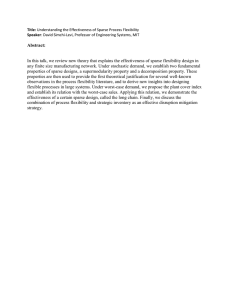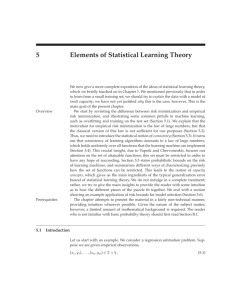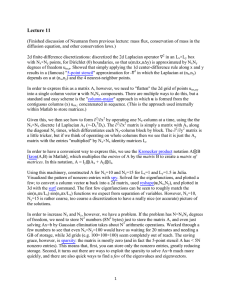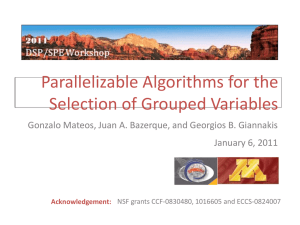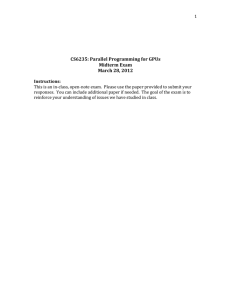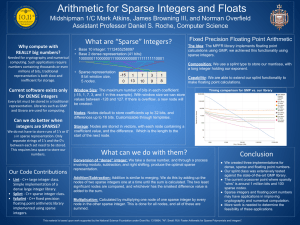Probability Inequalities in Sparse Recovery Problems Vladimir Koltchinskii School of Mathematics
advertisement
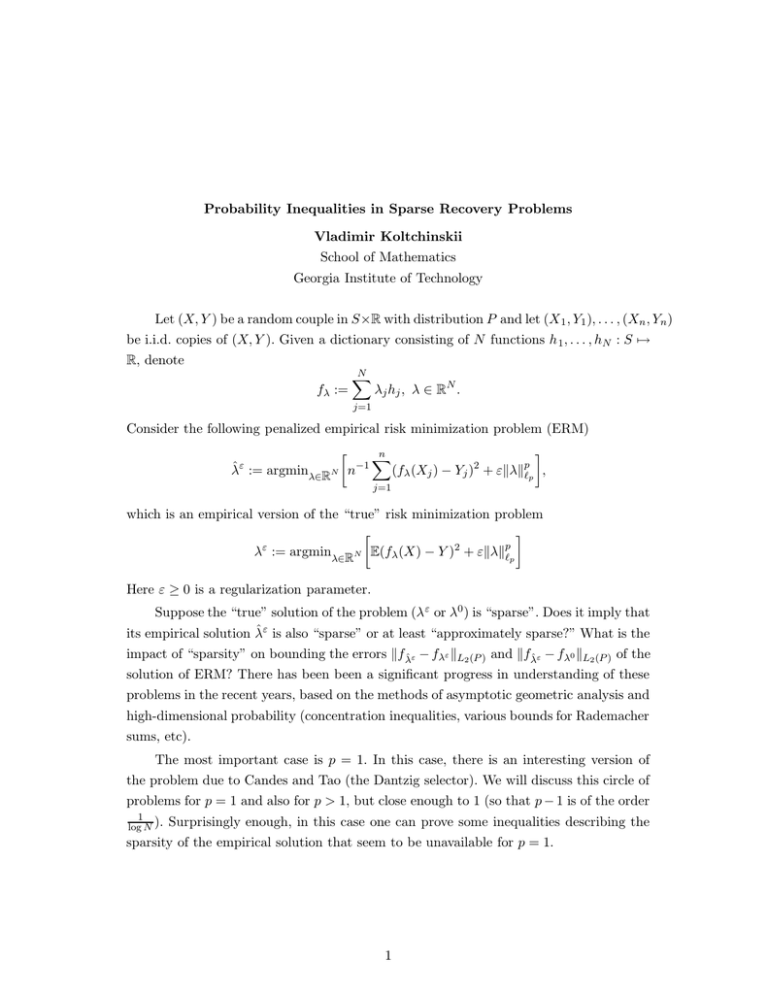
Probability Inequalities in Sparse Recovery Problems Vladimir Koltchinskii School of Mathematics Georgia Institute of Technology Let (X, Y ) be a random couple in S×R with distribution P and let (X 1 , Y1 ), . . . , (Xn , Yn ) be i.i.d. copies of (X, Y ). Given a dictionary consisting of N functions h 1 , . . . , hN : S 7→ R, denote fλ := N X λj hj , λ ∈ R N . j=1 Consider the following penalized empirical risk minimization problem (ERM) ε λ̂ := argminλ∈RN n −1 n X j=1 (fλ (Xj ) − Yj ) 2 + εkλkp`p , which is an empirical version of the “true” risk minimization problem λε := argminλ∈RN E(fλ (X) − Y )2 + εkλkp`p Here ε ≥ 0 is a regularization parameter. Suppose the “true” solution of the problem (λ ε or λ0 ) is “sparse”. Does it imply that its empirical solution λ̂ε is also “sparse” or at least “approximately sparse?” What is the impact of “sparsity” on bounding the errors kf λ̂ε − fλε kL2 (P ) and kfλ̂ε − fλ0 kL2 (P ) of the solution of ERM? There has been been a significant progress in understanding of these problems in the recent years, based on the methods of asymptotic geometric analysis and high-dimensional probability (concentration inequalities, various bounds for Rademacher sums, etc). The most important case is p = 1. In this case, there is an interesting version of the problem due to Candes and Tao (the Dantzig selector). We will discuss this circle of problems for p = 1 and also for p > 1, but close enough to 1 (so that p − 1 is of the order 1 log N ). Surprisingly enough, in this case one can prove some inequalities describing the sparsity of the empirical solution that seem to be unavailable for p = 1. 1
